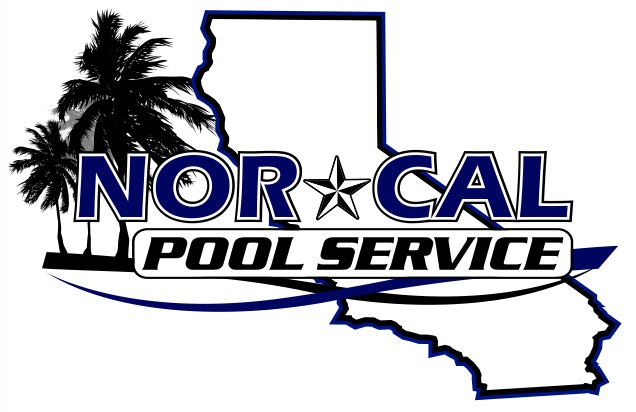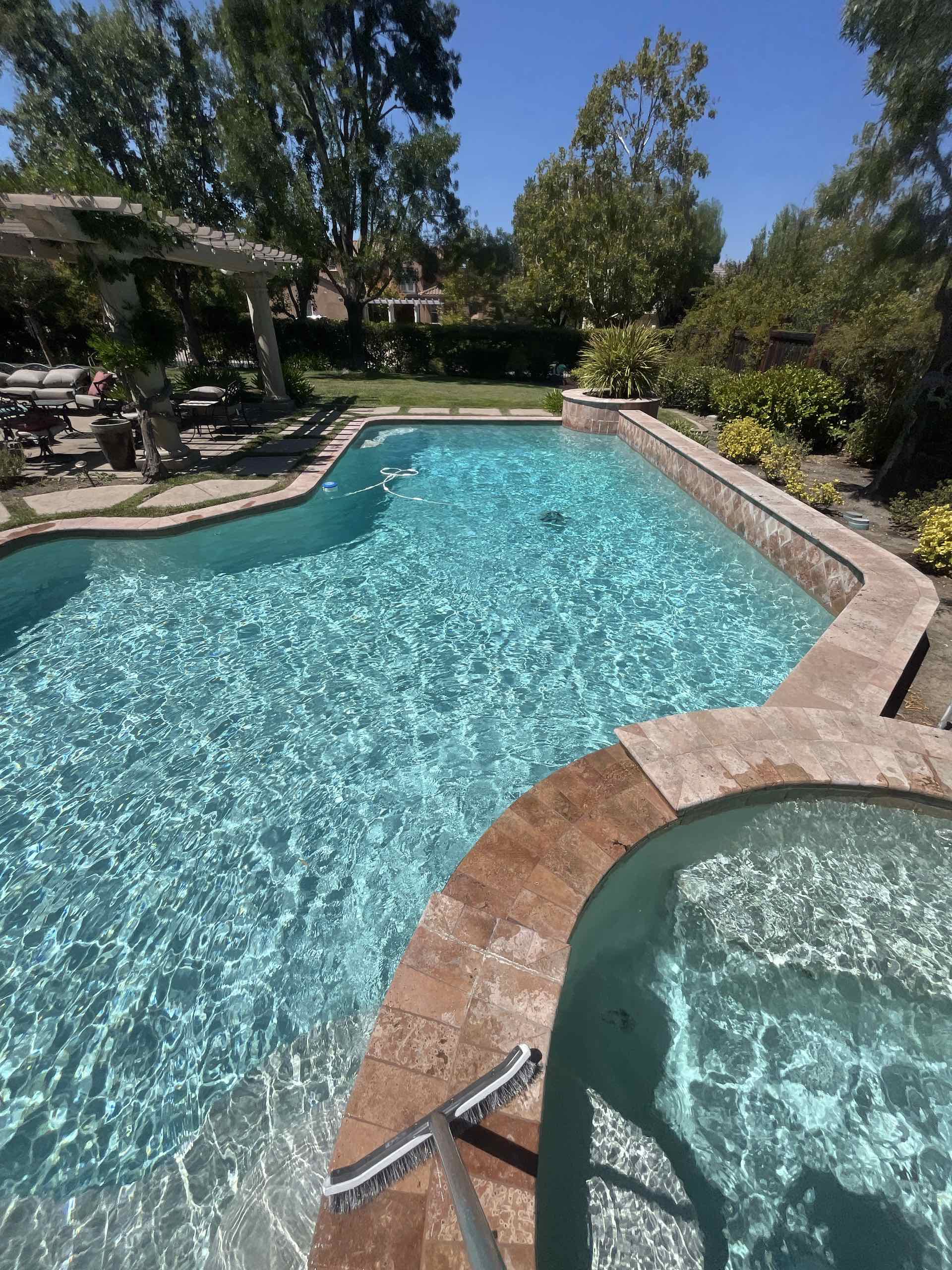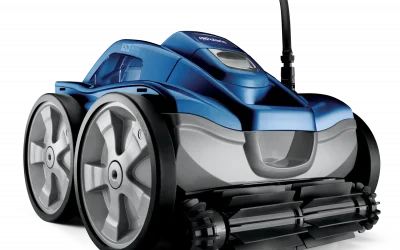Can a swimming pool actually use less water than a dry, dusty yard during a heat wave?
This guide shows how to maintain pools during droughts smartly and legally. We control evaporation, manage chemistry, and optimize filtration. This way, we save water while keeping the pool water safe and clear.
We focus on saving water without losing cleanliness, even with tighter rules. We start with the basics: follow local rules, reduce backwashing, use covers, and adjust pump schedules. This approach helps conserve water without sacrificing sanitation or comfort.
At NorCal Pool Service, we use data, not guesses. We follow local rules and adjust settings based on pool type, climate, and use. Our goal is to keep your pool open, clean, and responsible during droughts.
Understanding Drought Restrictions and How They Affect Pool Maintenance
When dry years come, rules get stricter fast. Agencies set limits that shape how we maintain pools during drought. We focus on saving water for pools while keeping them clear and safe.
Clear guidance helps us deal with drought impacts on pools without wasting water.
Local regulations we must follow in the United States
Drought declarations lead to tiered mandates by state, county, and city. Under municipal water rules, many utilities require permits for initial fills. They ban new pool filling or allow refills only to replace evaporation.
Some cities mandate covers and enforce no-splash practices at all times.
Health departments and water districts may prioritize leak repairs and cite visible waste. Several agencies direct backwash or drained water to sanitary sewers, not storm drains. We confirm the local ordinance, document steps, and align our pool maintenance during drought to pass inspections and qualify for rebates where offered.
Impact on refilling, draining, and backwashing practices
Full drains are often off-limits unless a licensed professional verifies a structural risk or a health emergency. Partial drains may need notification before we start. Most utilities limit refilling to offset evaporation only, and they can cap hose run times or require autofill locks.
Backwashing frequency may be restricted. We use pressure gauges and flow meters to set data-backed intervals and reduce discharge volume. These measures satisfy drought restrictions for pools and support water conservation for swimming pools across varied climates.
Setting realistic expectations for pool owners during dry spells
During drought, water clarity leans more on filtration and chemistry than on dilution. Cosmetic stains or minor algae marks may be managed in place until rules ease. Water features, splash zones, and constant spillovers should pause to curb loss.
Service may shift to early mornings or evenings to cut evaporation. We advise checking the local supplier’s guidance frequently, since municipal water rules can change with reservoir updates. With steady discipline, pool maintenance during drought can stay compliant while dealing with drought impacts on pools responsibly.
Drought Conditions and Pool Care
We see pools as water assets, not just drains. With covers, leak fixes, and smart scheduling, a pool can use less water than a lawn. Our drought-friendly pool care keeps water in and ensures clarity and comfort.
Why pools can still be water-wise with the right approach
We cut down on water loss by fixing leaks and avoiding unnecessary water use. Covers and windbreaks help reduce evaporation and splash. By managing water and pump times, we keep the pool clean without wasting water.
Balancing sanitation, safety, and conservation goals
Clean water means steady chlorine levels and stable pH. We monitor pressure, temperature, and wind to keep dosing right. This balance keeps the water safe and clean, even in dry times.
Common mistakes that waste water and how we avoid them
- Overfilling or ignoring autofill settings; we adjust valves to stop constant trickle loss.
- Backwashing by habit; we wait for a measured pressure increase before service.
- Leaving the pool uncovered in heat or wind; we use covers and shade to curb evaporation.
- Running pumps at high speed all day; we schedule variable-speed profiles for efficient pool operation.
- Letting cyanuric acid climb; we track levels to prevent drains triggered by mismanagement.
- Shocking too often; we maintain steady residuals, using targeted clarifiers and enzymes to extend filter cycles.
These steps make pool care in times of drought practical and consistent. By managing pool water with data and discipline, we save water and keep swimmers safe.
Optimizing Filtration and Circulation to Reduce Water Waste
We adjust circulation to meet the pool’s needs, making every gallon and kilowatt count. This approach reduces turbulence, heat loss, and splash. It helps save water in pools.
By optimizing filtration, we get cleaner water at lower speeds. This leads to energy and water savings, especially in dry years.
Variable-speed pumps and energy-water tradeoffs
We choose variable-speed pumps from Pentair, Hayward, and Jandy. They run longer at lower rpm, keeping turnover steady. This reduces stress on plumbing and surfaces.
This method also cuts down on noise and improves skimming. It helps with pool maintenance during droughts and lowers utility bills.
Lower flow means less aeration and churn, reducing evaporation. Many utilities offer rebates for these pumps, adding to savings. We also check priming and valves to prevent air entrainment, which wastes water and erodes performance.
Filter choices: cartridge vs. sand vs. DE in drought conditions
Cartridge filters, when large enough, avoid backwashing and can run for months. They’re a good choice for saving water and reducing backwashing without losing clarity.
Sand filters are durable and simple. In droughts, we use glass media upgrades and backwash flow meters to cut waste. Diatomaceous earth captures very fine particles but often needs more frequent backwash and recharge.
In many cases, switching to large-format cartridges or adjusting flow helps optimize filtration. This protects water reserves.
Backwash minimization strategies and monitoring pressure rise
We clean by data, not just by calendar. A pressure rise of about 8–10 psi over a clean start tells us to act. We use transparent sight glasses and differential gauges to know when to backwash less.
Right-sized circulation, often one turnover per day for residential pools, limits waste. Where allowed, reclaim tanks can capture backwash for landscaping. This adds practical energy-water savings and supports water conservation in pools during tight supply.
Preventing Evaporation and Controlling Pool Water Levels
We start by reducing evaporation, the biggest daily loss. By using smart tools and habits, we keep our pool water clear and comfortable. This is key to managing water levels during dry spells.
Using solid and liquid solar covers effectively
We use covers that fit tight and seal well. Covers from Cover-Pools and GLI can cut evaporation by 50–95%. They also reduce heat loss. Automatic covers save money when the pool is not in use.
For when solid covers aren’t an option, we use liquid covers. They offer some evaporation reduction, especially on calm days. We follow the label for application and reapply after heavy use. We also use them at night to help manage water levels.
Windbreaks, shade, and surface temperature management
Wind increases evaporation, so we use windbreaks and shade sails. We also run circulation at night to cool the surface. During hot or windy days, we limit water features to conserve water.
- Keep laminar jets and waterfalls off in midday heat and gusts.
- Operate the cover whenever the pool is idle, even for a few hours.
- Hold the waterline just below the overflow tile to prevent weeping loss.
Smart autofill settings and leak detection cues
We adjust autofill settings to prevent overflow. A small mark on the tile helps us spot unusual drops. This keeps our water levels in check during dry spells.
- Run a bucket test with pumps off overnight to compare natural loss to pool drop.
- Use dye tests at fittings, lights, and skimmers to flag seepage.
- Inspect backwash and waste lines for slow leaks or stuck valves.
- Check deck drainage to catch unnoticed runoff that mimics evaporation.
By following these steps and using pool covers, we reduce evaporation. This keeps our pool water levels steady, saving on refills. It’s responsible pool care during droughts.
Water-Saving Chemistry: Sanitizers, Stabilizers, and pH Control
We see chemistry as key to saving water in pools. By controlling sanitizers, stabilizers, and pH levels, we avoid wasting water. This approach keeps pools clear and water levels stable, even in dry areas.
Maintaining free chlorine with cyanuric acid optimization
We keep free chlorine at 2–4 ppm and adjust cyanuric acid (CYA) to 30–50 ppm outdoors. This mix protects chlorine from UV damage without overusing stabilizer. When CYA is high, we use liquid sodium hypochlorite or saltwater generators to prevent needing to drain part of the pool.
Our method keeps chlorine levels steady, saving water. This means fewer shocks and less need to dilute the water.
pH, alkalinity, and calcium balance to prevent draining for correction
We keep pH between 7.4 and 7.8 and total alkalinity at 60–90 ppm, or 70–90 ppm for salt systems. Calcium hardness is adjusted based on the pool surface and water source to prevent scale and etching.
Monitoring the Langelier or Calcite Saturation Index helps us avoid deposits and stains. This approach is crucial for managing pool water in dry conditions and keeping maintenance costs down during drought.
Saltwater chlorination vs. traditional tabs during drought
Saltwater chlorination provides steady chlorine without adding CYA. Trichlor tabs, on the other hand, add stabilizer and acid, which can increase CYA and lower pH. In dry conditions, we prefer methods that don’t build up chemicals.
Many pools use modern salt systems from brands like Pentair or Hayward. These systems offer consistent chlorine levels and help save water. When using tabs, we monitor CYA closely and add liquid chlorine to keep the pool chemistry balanced.
Enzymes and clarifiers to extend filter cycles
We use enzyme formulas to break down sunscreens and body oils, reducing combined chlorine and easing filter work. Clarifiers, including chitosan-based options, help catch fine particles, keeping filters clean longer.
These tools help filters last longer, saving water in dry conditions. We also choose non-copper algaecides to reduce stain risks that might require dilution during drought.
Maintenance Routines That Preserve Water
We focus on simple habits to keep the filter clean and water clear. This helps us save water, especially during droughts. It also keeps costs down and supports pool care across the United States.
Skimming, brushing, and robotic cleaners to reduce backwashing
We skim every day and brush once a week to prevent algae. This method lowers the need for shock treatments and extends filter life. Robotic cleaners from Maytronics and Polaris capture fine silt, reducing backwashing needs.
Vacuum-to-waste alternatives and debris management
We only vacuum to waste when it’s necessary. Otherwise, we pre-net leaves and use in-line canisters. After storms, we dose flocculant and remove settled material to save water.
Scheduling service during cooler hours to limit evaporation
We work at dawn or evening to reduce evaporation. We also limit aeration and keep the waterline low. This helps us save water and maintain our pools efficiently.
Managing Pool Water in Dry Conditions for Commercial and Residential Pools
We create specific plans for managing pool water in dry conditions. This depends on the pool type and how many people use it. For commercial pools, we focus on following health codes and saving water. Residential pools aim for clear water with minimal need for adding more water.
Busy commercial places use variable-speed pumps to save energy and water. We also use large manifolds to cut down on backwashing. Automatic covers help reduce water loss when the pool is not in use. Using UV or advanced oxidation systems helps keep the water clean without shocking it too often.
Commercial pools deal with a lot of splash-out. So, we keep gutters and balance tanks clean. We also adjust autofill and make-up water meters to catch any unusual water use early. These steps help save water and keep the pool water safe and clean.
At home, we focus on longer, slower filtration to keep the water clear. Using pool covers often helps reduce water loss and keeps the pool clean. We choose pool chemicals that don’t build up, so you don’t have to drain the pool often.
In both commercial and residential pools, we check for leaks twice a year. We fix any leaks and check valves and autofill systems for wear. We also train staff on how to handle water-saving during dry times. This way, taking care of pool water in dry conditions becomes a regular part of pool care.
- Commercial: verified VSP flow, cartridge manifolds, UV/AOP support, calibrated make-up meters.
- Residential: cover discipline, low-flow cycles, clean hydraulics, chemistry that limits drains.
- Both: leak audits, valve and autofill checks, alignment with local health directives.
When to Repair, When to Reuse: Leak Fixes, Partial Drains, and Water Recycling
We start by finding and fixing leaks to save water fast. Signs include unexplained autofill activity and a drop in water level. Also, soggy soil and air in the pump basket are signs.
To confirm a leak, we run a bucket test. We watch for differences between the pool and the bucket. Then, we do pressure tests and use ultrasonic listening to find underground leaks.
Once we find the leak, we fix it. We might use epoxy or carbon-fiber for cracks. At the equipment pad, we replace seals and valves to stop slow leaks.
When water quality changes, we consider partial drain options. In some places, we use reverse osmosis to recycle water. This removes impurities and saves water.
Without RO, we drain water in cooler weather and cover the pool to reduce evaporation. If allowed, we dechlorinate the water for irrigation. We follow rules and document our actions to manage water wisely.
- Prioritize leak detection to protect supply and reduce costs.
- Use testing methods that verify loss sources before repair.
- Choose partial drain alternatives, such as mobile reverse osmosis, when feasible.
- Coordinate timing and covers to cut post-refill evaporation.
- Capture and reuse permitted outflow to support pool care in times of drought.
Why Choose NorCal Pool Service
We help homeowners and facility managers stay ahead of drought conditions and pool care. At NorCal Pool Service, we follow municipal rules and water agency programs across the United States. Our team adjusts variable-speed pumps, retrofits filters, and sets cover strategies to reduce evaporation and splash-out.
We document each conservation step so you can pursue eligible rebates with confidence.
We tailor chemistry to avoid buildup and waste during pool maintenance during drought. Our technicians balance pH, alkalinity, and calcium, and fine-tune CYA to keep free chlorine steady. We track sanitizer demand, flow, and psi so filters last longer and backwashing drops.
The result is clear water, fewer corrective drains, and real water conservation for swimming pools.
Our approach to managing pool water in dry conditions is practical and transparent. We schedule service in cooler hours, deploy windbreaks and covers, and verify seals and fittings to limit leaks. When partial drains or water recycling are needed, we coordinate with local authorities and follow every code.
You get clean, safe water without needless loss.
Choose NorCal Pool Service for drought-smart care that protects your pool and the community’s supply. We align sanitation, safety, and conservation with proven tactics and clear reporting. With our data-driven routines and seasoned technicians, pools stay pristine even through long, hot seasons of pool maintenance during drought and ongoing water conservation for swimming pools.



